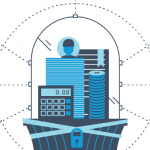The internet and the widespread adoption of cloud-based technologies have knocked down many of the barriers that entrepreneurs used to face when launching a business. Today, 97% of the businesses in APEC economies are categorized as small or medium, and those businesses account for 60% of GDP and 50% of the labor force in those economies. But all of these businesses, if they’re successful, will have to face a decision as they grow: What is the best way to handle HR?
HR provides essential functions for Asian businesses. With today’s stiff competition for top talent, for example, recruitment and retention – both of which are HR functions – are paramount. And, for businesses that operate across national boundaries, it’s HR’s job to keep up with the myriad of employment laws and taxation requirements. But unlike large corporations, small businesses don’t have an existing pool of HR professionals ready to take on the challenges that come with growth. Most can’t go out and hire a fully-staffed HR department, and many wouldn’t know where to begin even if they could. Small businesses need an HR model expressly suited for their needs and, when looking at typical structures, two models stand out as optimal choices for small businesses.

Personnel
The personnel model is transactional. It’s focused on completing basic functions like payroll, benefits, and compliance with employment laws as efficiently and cost-effectively as possible. In that sense, it’s also reactive, responding to the needs of the various functional areas. The personnel model rarely (if ever) launches its own initiatives (like succession planning, organizational development, training, etc.). In companies using the personnel model, HR functions are usually centralized even if the business has multiple locations. In some cases, the payroll “department” consists of one person performing all of these basic functions. An HR department based on the personnel model is seen as a necessary expense rather than as a strategic business partner. One downside of this model is that employees may not have the level of expertise needed for a region with Asia’s diversity in languages and laws.
Outsourced
Under this model, repetitive and/or transactional processes are outsourced, freeing up the in-house HR staff to work on strategic initiatives. In addition to benefits, payroll, and compliance, commonly outsourced tasks include recruiting, onboarding, training, and relocations. It’s a good option for businesses with limited resources because outsourcing generally costs less than investing in the personnel and technology that would be needed to perform those functions in-house. Potential drawbacks include things like lack of customization, failure of the vendor to deliver the contracted level of service, liability for errors made by the vendor, lack of internal visibility into HR processes, and the potential for price increases. Most of these, however, can be alleviated with proper vendor management.
In today’s increasingly complex business environment, all employers – from small businesses all the way through multinational corporations – need to make HR a business priority. But different companies have different needs and should structure their HR resources accordingly. Both the personnel model and the outsourced model are strong options for small businesses in Asia.







